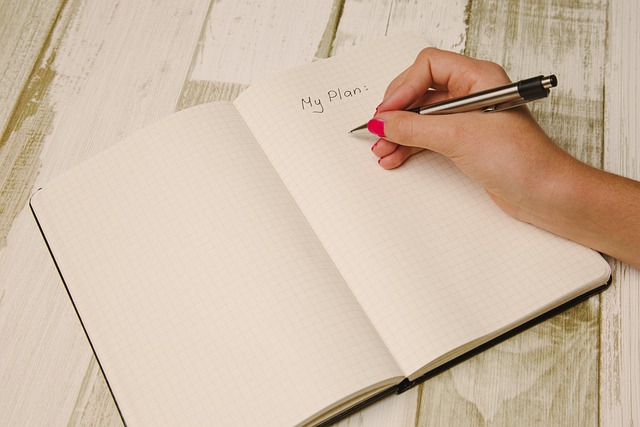The Importance of Taking Breaks for Work-Life Balance
In the fast-paced world we live in, the concept of taking breaks often gets overlooked. Many people believe that staying glued to their work may show dedication, but truthfully, this approach can lead to burnout, decreased productivity, and a skewed work-life balance. Taking breaks is a vital strategy that helps manage stress, improve efficiency, and foster overall well-being. This article explores why breaks matter and how they can transform your daily routine into one that promotes balance and health.
To start, let’s delve into why taking breaks is not just a luxury—it’s a necessity. Imagine your brain as a high-performance engine. For it to run smoothly, it requires fuel and occasional downtime for maintenance. When you work for long stretches without breaks, your mental faculties begin to wane. You may feel tired or unfocused and struggle to complete tasks efficiently. A study by the Draugiem Group revealed that the most productive employees worked for 52 minutes and then took a 17-minute break. This cycle of concentrated work followed by restorative breaks led to greater productivity. Therefore, when you take breaks, you allow your brain to recharge, ultimately enhancing your efficiency and creativity.
Moreover, breaks can serve as crucial moments for physical movement. Long periods of sitting can lead to a multitude of health issues, from back pain to cardiovascular disorders. By taking short breaks, you can stand up, stretch, and even engage in exercise, like a brisk walk or simple yoga poses. Such activities stimulate circulation and infuse your body with oxygen. Every little step counts, and integrating movement into your breaks can significantly improve your health. It’s not merely about the time you spend at your desk; it’s also about how you prioritize your physical well-being during your working hours.
Additionally, taking breaks has a positive impact on mental health. Continuous work without interruptions can lead to feelings of overwhelm or anxiety. When you allow yourself a moment to breathe, you can manage stress levels more effectively. Engaging in relaxation techniques during breaks, such as deep breathing, mindfulness exercises, or even a quick meditation, can significantly reduce tension. It’s important to prioritize mental health as much as physical health because both are intertwined. When you nurture your mental well-being, you improve your ability to focus on tasks, respond to challenges, and interact positively with colleagues.
Let’s not forget the role of breaks in enhancing creativity. When you step away from a problem or project and allow your mind to wander, creative solutions often arise. Many individuals experience “aha” moments during breaks, sparking innovative ideas that they might not have conceived while intensely focused on their work. This phenomenon occurs because, during breaks, your brain shifts into a more relaxed state, allowing for the free flow of thoughts. Embrace this creativity by scheduling regular breaks, ensuring you provide your mind with the space it needs to explore new avenues.
Another compelling reason for taking breaks relates directly to our relationships at work. Over time, the relationships we maintain with colleagues can significantly influence our job satisfaction and performance. By stepping away from your screen, you create opportunities for social interaction. Engaging in casual conversations with coworkers during breaks helps strengthen workplace camaraderie. These interactions can reduce feelings of isolation and promote a sense of belonging. An enjoyable workplace environment often leads to heightened morale and productivity, highlighting the necessity of breaks in fostering a supportive work culture.
Furthermore, implementing breaks into your day can enhance focus. Have you ever found yourself zoning out during a lengthy meeting or while staring at a screen for too long? It happens to everyone. Recognizing when you’ve hit that wall is crucial. Rather than pushing past it, consider taking a short break. Studies suggest that our ability to focus diminishes after about 90 minutes of continuous work. By incorporating breaks, you significantly boost your attention span, allowing you to dive back into your tasks with renewed energy and perspective.
When discussing breaks, we cannot overlook the significance of structured time away from work. There exists a tangible connection between taking breaks and achieving a solid work-life balance. Oftentimes, professionals pour all their energy into their jobs at the expense of their personal lives. This imbalance can make individuals feel drained and unfulfilled outside of work. By scheduling intentional breaks throughout your day and respecting your time off, you can cultivate a healthier relationship between your work and personal endeavors. As a result, you might find that you look forward to both the tasks at hand and the rewarding time you spend away from them.
Establishing a routine that incorporates regular breaks has evolved into a trend supported by advocates of productivity methodologies. The Pomodoro Technique—where you work for a set period, followed by a short break—has gained popularity due to its effectiveness. Adapting this technique or another similar model can yield tangible results. By following these structured patterns, you create a balanced approach to work that ensures moments of productivity interspersed with moments of rest. Scheduled breaks become a form of self-care, acknowledging that you’re human and need to recharge.
In the age of remote work, the challenge of taking breaks has been magnified. The absence of clear work-life boundaries can tempt individuals to work longer hours without pause. It’s essential to resist the urge to remain connected non-stop. Create boundaries for your workday that include scheduled breaks. Perhaps you set a timer for yourself to halt work every hour for a brief 5-10 minutes. Use this time to walk around your home, grab a snack, or even have a personal chat with a loved one. These little moments help maintain your sanity and comfort during long hours of working from home.
Lastly, organizations play a pivotal role in promoting breaks for their employees. Policies that allow for breaks, include wellness programs, and advocate for work-life balance enhance workplace culture. By prioritizing breaks, companies signal to employees that their health and well-being are worth investing in. These initiatives not only help staff perform better but also lead to higher retention rates. Talent thrives in environments where its leaders promote balance and where employees feel valued.
FAQ
-
Why are breaks essential for productivity?
Breaks are essential because they help to prevent burnout, maintain focus, and encourage creativity. By stepping away from your work, you recharge your brain, allowing it to function at its best when you return. -
How often should I take breaks during my workday?
A popular recommendation is to work for 25-50 minutes and then take a 5-10 minute break. Alternatively, some find it effective to work for 90 minutes before taking a longer break of around 15-20 minutes. -
Can taking breaks improve my mental health?
Absolutely! Taking breaks allows you to manage stress effectively, reduces anxiety, and provides time for relaxation and self-care, all of which contribute positively to your mental health. -
What activities can I do during a break?
During breaks, you might stretch, take a short walk, practice breathing exercises, engage in a quick chat with a colleague, or enjoy a healthy snack. Choose activities that refresh and rejuvenate you. -
How do breaks contribute to achieving work-life balance?
Breaks help create boundaries around work time, allowing you to carve out uninterrupted moments for personal time, family, and leisure activities, thus facilitating a healthier work-life balance.



